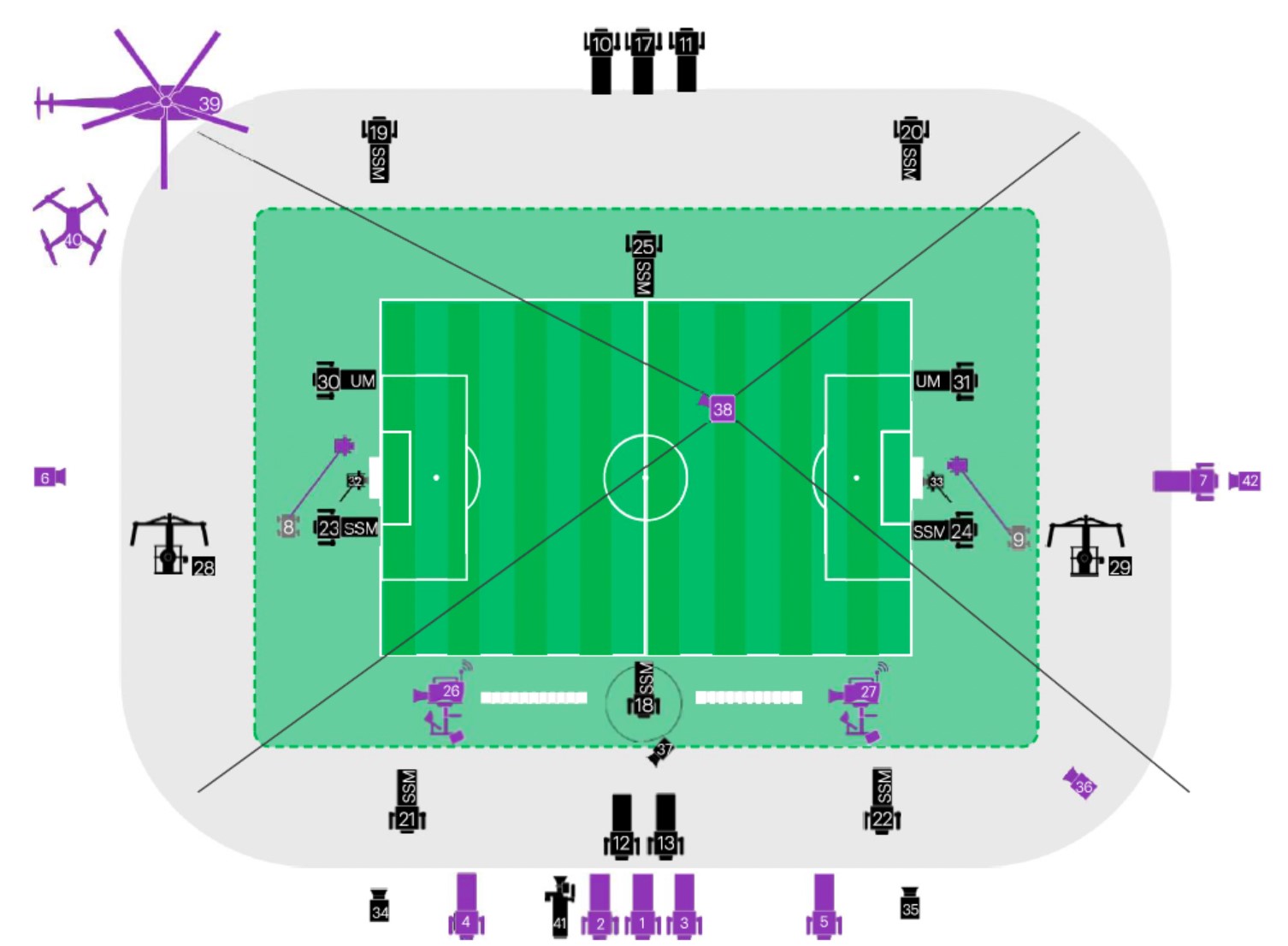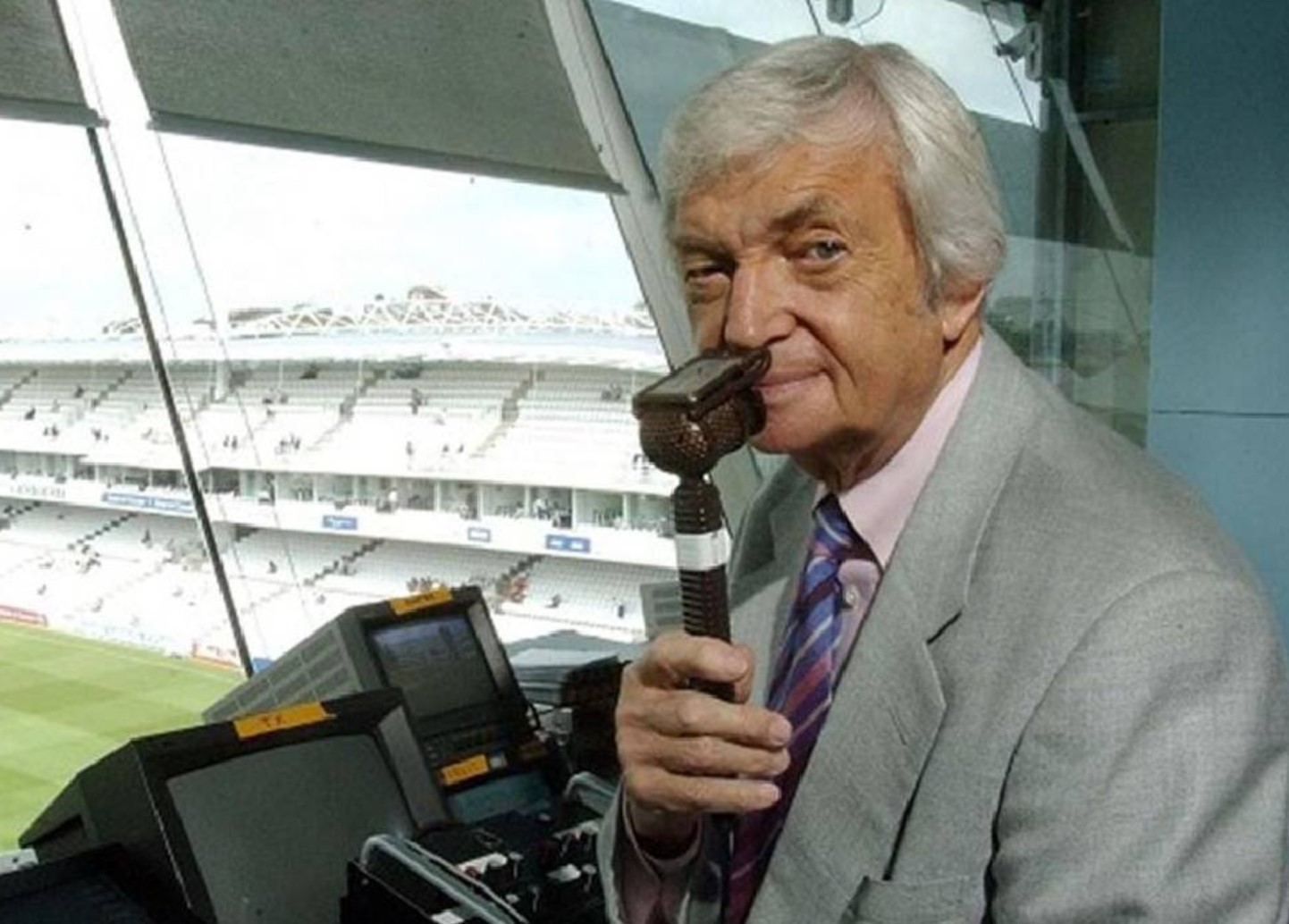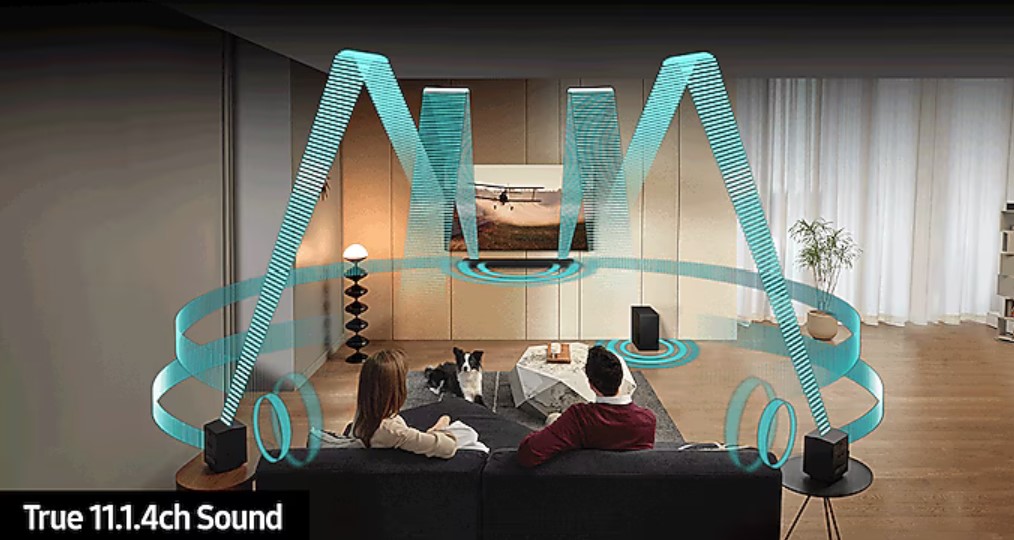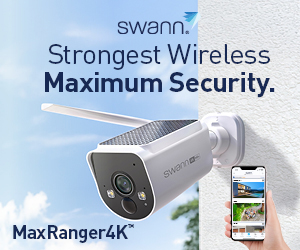The best TVs for watching sports are not necessarily the best TVs for HDR movies and free-to-air/digital TV. We help you get the one for sport!
Conversely, the best TVs for watching movies are also great for sports, with one important difference. Most sports are not transmitted in 4K HDR (High Dynamic Range), so HDR10/10+/Dolby Vision is not a prerequisite.
What is sport, and why is it different to normal TV?
When you think of sport, most immediately think of the footy (all codes). Some think cricket or golf. Add hockey, basketball, baseball, equestrian, rowing, sailing, and swimming. Let’s not forget motorsport and horse racing. There is a whole menagerie – no wonder Kayo is booming.
There is one key difference from movies and TV, where you passively enjoy the content. In sports, you are an active spectator, and the aim is to draw you into the game—to impart some of the atmosphere, excitement, elation, and disappointment to feed your inner sportsperson.
In short, broadcast sport is about making you part of the crowd, as if you were there. Advertisers know that, too, and pay a premium to reach you with carefully crafted, psychologically appropriate messages. Have you ever felt like a Tooheys or two or smacked down a VB while demolishing Smith’s crisps?
How do great sports broadcasts do that?
Cameras and commentary are key. There are stump cams, goal cams, audience cams, dressing room cams, sideline cams, overhead cams, under cams, roof cams, drone cams, helmet cams, and so many more. The 2024 US Superbowl has 165 cameras and a vast team of directors to create one real-time show.
In Australia, locally televised matches have at least 12 cameras covering play, three outside the venue, six in dressing rooms/coach boxes, and many more covering the crowd, entertainment, etc. FreeTV Australia has an interesting article about the use of cameras at the footy.

I Sportsbet you did not know that.
Commentary – it is your mate talking to you
Successful sports commentators have a wealth of knowledge—more than any fan may have. They also need to be conversational with a sense of authority. It is if your mate in the seat next to you is calling/explaining the game. This means different mics, noise reduction from other sources, and a bank of monitors showing the live feeds. The commentator is the orchestra conductor.

You could say he keeps TABs on the action. OK, to the TVs that work best.
Sports broadcasts are different
Time of day
Many broadcast sports are played during the day, which usually means they are watched in daylight. You need a TV with enough brightness (SDR full screen sustained 500 nits) and good ambient light reflection handling to overcome bright rooms. That means lots of nits and a good matte screen!
Lots of colour
Most sports have large single-colour areas, like the oval, pitch, golf course, etc. This means a good, even backlight and multiple dimming zones, or you see stripes and patchy colours. Look for at least a Full Array of Local Dimming (older LCD technology); some full-backlit IPS mini-LEDs and all OLEDs are the best. Do not buy an edge-lit or direct-lit TV, as these cannot produce decent blacks and accurate colours.

Watch with friends
If you watch sports with family or friends, the TV must have a wide viewing angle (field-of-view) so people seated to the sides of the screen don’t see a drastically degraded image. That means IPS panel LED (150-160°) and OLED (almost 180°). Avoid VA screens as these are seldom capable of more than 120°. Do not believe any VA specification sheet that says +/-178°. How do you know if it is VA – walk side to side and see if the colour changes and the image washes out. VA also usually claims >3000:1 contrast where IPS is <3000:1.
The centre of the TV should be at your seated eye height. Below is the ideal seating distance for a 4K TV to see the crispest image. Any closer, you may start to see pixelation (graininess), and further, you may see colour degradation.
| Size | Ideal seating distance |
| 50” | 2.13m |
| 55” | 2.29m |
| 60” | 2.59m |
| 70” | 3.05m |
| 80” | 3.35m |
| 85 | 3.36m |

Follow fast action
If you watch a lot of fast-action sports, then Motion Smoothing can help. You don’t need it for the footy, but car racing can look blurry. The key here is a fast processor with a quick <10ms response time, great upscale, and motion smoothing.
Size is not important, yeah, nah
You know the least important aspect of a sports TV is size! Most people buy the biggest TV they can afford. That usually means a big, cheap VA, an edge-lit monster insulting to a videophile’s eyes.
The final ingredient – exhilarating sound
Sound is 50% of the viewing experience. Sports are generally transmitted as SDR (occasionally HDR) and up to 5.1 surround (rarely HDR10+/Dolby Vision/Atmos). Often, the commentary will take one or two of the sound channels to ensure it is clear and distinguishable from the gameplay.
No matter how good the TV’s sound object tracking, sports are too fast to accurately marry the action with the sound. TV sound cannot ‘put you there’.
Frankly, every TV we have ever reviewed needs a decent surround sound soundbar capable of 5.1 or 7.1 surround and with a clear voice/dialogue setting. These days, the better Dolby Atmos soundbars can take that surround sound and upmix it to add some 3D spatial effect—as if you were there. Even better are those with dedicated rear forward-and-up-firing speakers 5.1.4 or 7.1.4. The sub-woofer adds to the excitement, with room-shaking cheers.
Summary – The best TVs for watching sports
- OLED is best followed by IPS (not VA) Mini-LED.
- Make sure you sit at the correct distance/height from the screen
- Size is the least important aspect
- Get at least a 5.1 soundbar, preferably a 5.1.4 or higher Dolby Atmos soundbar.
- Select sports settings on the TV and soundbar.
Best TVs for watching sports 2025
The new 2025 models are not yet in stores as we will update this when we review them.
Panel types and specifications are from Display Specifications and may vary by model and country. These are models listed on the manufacturers’ AU websites.
It is not that VA panels offer inferior image quality. It is simply the off-angle viewing loss of colour and quality issue, and if that is no concern to you, then buy a VA panel.
LG
LG (LG OLED is perfect for all TV genres and supports Dolby Vision and Atmos)
- Good: LG B4 OLED for rooms with reasonable light ambient light control LG B4 OLED Smart TV – excellent picture for a lower price
- Better: LG C4 evo OLED for brighter rooms LG C4 evo OLED – the Goldilocks OLED TV – just right
- Best: G4 evo OLED by far for bright Aussie loungerooms with an excellent anti-glare screen. LG G4 evo OLED – LG’s best and brightest TV tops all
QNED (TSA 2024 models)
- OK: QNED81—55, 65, 75, 85 IPS Edge-Lit
- OK: QNED86—55, 65, 75, and 85 IPS Edge-Lit
- Good: QNED91—Some countries get IPS panels for 65, 75, and 85—check with the salesperson.
Samsung
Many of Samsung’s TVs use edge-lit VA panels, including its Frame, Serif, some QLED, and all Crystal UHD. Its QD-OLED TVs offer outstanding colour and brightness but don’t support Dolby Vision for movies.
QD-OLED
- Good: S90C (2023 model)
- Better: S90D
- Best: S95D with an excellent anti-glare screen
Mini-LED (Neo QLED)
- QN800D 8K—all sizes are VA Edge-lit
- QN900D 8K—all sizes are VA Edge-lit. Samsung QN900D Neo QLED 8K 2024 – bragging rights!
- QN90D—55, 75. 85 use IPS
- QN85D—some countries get IPS panels for 55, 65, 75, and 85, but most get VA.
QLED
Some models use IPS in specific screen sizes.
- Q80C (2023) 55, 65, 75” may use IPS, but please check with the salesperson
- Q70D – all sizes are VA Edge-lit
- QE1D – all sizes are VA Edge-lit
TCL
All 2024 TCL mini-LEDs use VA panels. It has no OLED TVs at this time.
- TCL C855 – the best value, high-performance, QD mini-LED got even better
- TCL C755 4K TV – entry-level mini-LED gives serious value for money
Hisense
- UXAU – 65” may use an IPS-ADS panel.
- U8NAU 75” may use IPS – the rest are VA. Hisense U8NAU 4K mini-LED TV – premium quality at a not-so-premium price
- U7NAU 75” may use IPS – the rest are VA. Hisense U7NAU 4K mini-LED TV – value without compromise
Sony
All Sony Bravia 9 and 7 are VA panels.
- Best: Bravia 8 OLED (we think this is evo OLED)
The best soundbars for listening to sports
An all-in-one soundbar will have very front-centric sound – no surround or feeling of being there. These are all Dolby Atmos capable and will upmix surround sound to faux DA.
Good
- Hisense AX512G 5.1.2 Hisense AX5120G 5.1.2 soundbar – the beginnings of Dolby Atmos
- LG S80QR (2023) 5.1.3
- JBL BAR 800 5.1.2 JBL soundbar range – 5 new Bar models with Dolby Atmos
Better
- TCL XD937U 7.1.4
- JBL BAR 1000 7.1.4 JBL soundbar range – 5 new Bar models with Dolby Atmos
Best
- LG S95TR (2024) 9.1.5 LG S95TR 9.1.5 Dolby Atmos 810W soundbar – a real spatial experience
- LG S95QR (2023) 9.1.5 LG 2024 Soundbar Innovations: Elevating Home Entertainment
- Samsung HW-Q930D 9.1.4 Samsung HW-Q930D 9.1.4 – more than you need for true Dolby Atmos
Ultimate
- JBL BAR 1300 11.1.4 JBL BAR 1300 – 1170 Watts, 11.1.4 Dolby Atmos soundbar
- Samsung HW-Q990D 11.1.4 Samsung HW-Q990D 11.1.4 Dolby Atmos soundbar – simply stupendous
- Sonos Arc Ultra, Sub 4 and 2 x ERA 300 rears (review to come). Old Arc review Sonos Era 300 as rears to the Sonos Arc – superb Dolby Atmos 7.1.4 soundbar

Want to know more?
- Confused about TV tech? That’s just what they want! (AV 2024 critical update
- Dolby Vision, HDR and SDR TV – a huge difference (AV 2024 guide)
- Five tips for better TV sound – Dolby Atmos for beginners
- How to buy a soundbar that meets your needs
TVs for watching sports










8 comments
Graham Bennett
Thanks for your TV set review which is very helpful.
My current LG OLED55B7T 55″ UHD started to suffer from pixel “burn-in” mainly from Foxtel (SKY News) lower frame “ticker” information. Also, I have a “burn-in” discolourisation located in the centre of the screen. The TV is 21/05/2018 (7 YO)
What 55″ replacement manufacturer and model would you recommend to give me the benefits of superior Movie/Sports viewing and would not suffer/eliminate pixel “burn-in” as SKY is the prominent content viewed most of the time?
Kris
I can vouch for the TCL 55c755… I had the 55c845 which as far as I can tell is the same as the 55c755. The 65c855 is at a great price now if you can Jag one before they are out of stock.
FYI, for Sky News ticker, the official term is not “burn in” that the tv suffers, but ”Brain Rot”. The centre of the television degradation is from the subliminal brain washing messages Fox inserts into their broadcasts.
Ray Shaw
Thanks Graham – I have a 55″ C755 and a C845 abnd they are great
Ray Shaw
Newer OLED is less prone but I get the issue with that damned ticker!!! Interesting I have the LG E7 and its like new with no burn in. The best 55″ by far is the TCL 755 Mini-LED https://cybershack.com.au/reviews/tcl-c755-4k-tv-entry-level-mini-led-gives-serious-value-for-money-av-review/. If you can fit a 65″ then the image quality gets even better with the TCL C855 https://cybershack.com.au/reviews/tcl-c855-2024-the-best-value-high-performance-qd-mini-led-got-even-better-av-review/ and you will get a bargain as these don’t have the same markups as LG and Samsung.
David de La Coeur
We bought an LG65” OLED and it hurts my wife’s eyes, she cannot watch this.
We have adjusted the settings to tone it down but still cannot watch it
Online reviews state this a known problem, any suggestions please other than asking HN to take it back
David de La Coeur 0418 351 034
[email protected]
Patrick Gauci
Good morning Charlie and thank you as always for your newsletter, an absolute unique without peer authoritative information hub which like many I have bee nprivielged to receive for years and free to boot !!
I just wanted to say I was totally amazed at the work that has one into and the information provided in the “Best TVs for watching sport” guide. Incredible and most informative.
So much so that firstly I wanted to write to you. I also wanted to send this to a friend who now retired some 10 years ago having been a career Senior sports TV producer in particular with Nine and Channel 10 producing various Summer and Winter Olympics.
However my problem is this ….. I could not find an option to forward this on to him, other than send him the whole email.
Can you help me please?
Thanks
Patrick
Ray Shaw
Hi Patrick. http://www.cybershack.com.au has all articles. The URL is https://cybershack.com.au/featured/best-tvs-for-watching-sports-av-guide-2024/
Ray Shaw
Hi David
This is strange as LG OLED does not use Pulse Width Modulation (PWM) dimming so there is no flicker. Any other TV – mini-LED, IPS or VA panel would be worse.